The vibrant city of Naples is pure Italy: full of life, history, and a unique atmosphere that magically blends the old and new worlds. This southern Italian city is not only the birthplace of pizza but also a cultural hub where history is present in every corner. Its winding streets, impressive churches, and bustling piazzas all invite visitors to explore the city’s unique rhythm and charm.

Although Naples’ reputation has been tarnished by its past associations with the mafia and waste management issues, the city has shed this old image. The relatively low number of tourists makes even the main attractions enjoyable to discover. Beyond its famous pizzerias—though the pizzas are indeed exceptional—Naples and its surroundings offer a wealth of hidden treasures to uncover.

History
Naples boasts over 2,500 years of history, having been founded by the Greeks under the name Neapolis. The city thrived during the Middle Ages and remained the cultural center of southern Italy under Spanish and Austrian rule. Its ancient ruins, medieval castles, and Baroque palaces all reflect a rich history that has continuously shaped and enriched Naples. The city’s proximity to Mount Vesuvius has made it a unique witness to the forces of nature, with the famous ruins of Pompeii and Herculaneum serving as poignant reminders of the volcanic eruption in 79 AD.

Attractions
Mount Vesuvius: Looming beside Naples, Vesuvius is one of the most famous and active volcanoes in the world, renowned for its eruption in 79 AD that destroyed Pompeii and Herculaneum. The summit offers stunning views of the Bay of Naples and the surrounding landscape, making it a popular hiking destination. Though still active, its last major eruption occurred in 1944. The area is not only rich in geological features but also boasts diverse flora and fauna. Vesuvius and its surroundings are UNESCO World Heritage Sites, attracting countless visitors each year with their combination of natural and historical intrigue.


Maradona: One of Naples’ iconic landmarks is the famous mural of Diego Maradona, a tribute to the football legend who led the city’s team to historic victories. Located in the Spaccanapoli district, the mural depicts Maradona as a legend and symbolizes the deep connection between the city and the player during his years in Naples. This artwork not only celebrates Maradona’s greatness but also reflects the pride and emotions of the Neapolitan people.

Pompeii and Herculaneum: A short train ride from Naples, Pompeii and Herculaneum offer a unique insight into everyday life in ancient Rome. Preserved by the eruption of Mount Vesuvius, these towns are spectacularly well-preserved, with ancient homes, temples, and frescoes still intact.
The Parco Archeologico di Pompei (Pompeii Archaeological Park), Pompeii, also known as Pompei, is undoubtedly the most outstanding attraction for visitors to Naples and the Amalfi Coast, and it’s a bucket list item for many. An expansive open-air museum and a UNESCO World Heritage Site, the archaeological site of Pompeii offers a literal walk in the footsteps of ancient Romans.
For a brief history: in a nutshell, the neighboring Mount Vesuvius erupted in AD 79, covering the ancient Roman city in meters of hot ash and pumice. Fortunately, most residents had already fled the city, but a percentage remained behind and were buried under the debris along with all of the city’s belongings, homes, and infrastructure.
About 1,500 years passed before a local architect rediscovered the ruins, though excavations didn’t begin until the mid-18th century.
Pompeii is vast, and it’s simply impossible to see everything in one day. The best approach is to plan ahead. Follow an audio guide or select a few key areas of interest in advance to make the most of your visit.
Some recommendations include my personal favorites: the Santuario di Apollo and the Foro di Pompei, the Casa dei Vettii, the Teatro Grande, and the Torre di Mercurio XI, which offers a bird’s-eye view of the ruins.





• Ercolano (Herculaneum in Italian) may be much smaller in scale than Pompeii, but what it lacks in size, it makes up for in the exceptional quality of its well-preserved details. One of the most fascinating aspects of Ercolano is witnessing just how much ash and debris buried the city, as you literally walk through the layers to explore the site. The quality of the marble floor mosaics and the painted wall frescoes is truly remarkable.


Spaccanapoli: This iconic street cuts through Naples and provides an enchanting experience. Along its route, small shops, bakeries, and cafes offer a glimpse into the bustling everyday life of Naples.

Teatro di San Carlo: One of the oldest and most famous opera houses in Europe, this neoclassical masterpiece opened its doors in 1737. Its golden decorations and outstanding acoustics continue to captivate visitors, making it a cornerstone of Naples’ cultural life.

Castel dell’Ovo and Castel Nuovo: The city’s two most famous castles stand along the coast of the Bay of Naples. Castel dell’Ovo is steeped in legend, while Castel Nuovo offers a glimpse into medieval times as a royal residence for Naples’ kings and queens.

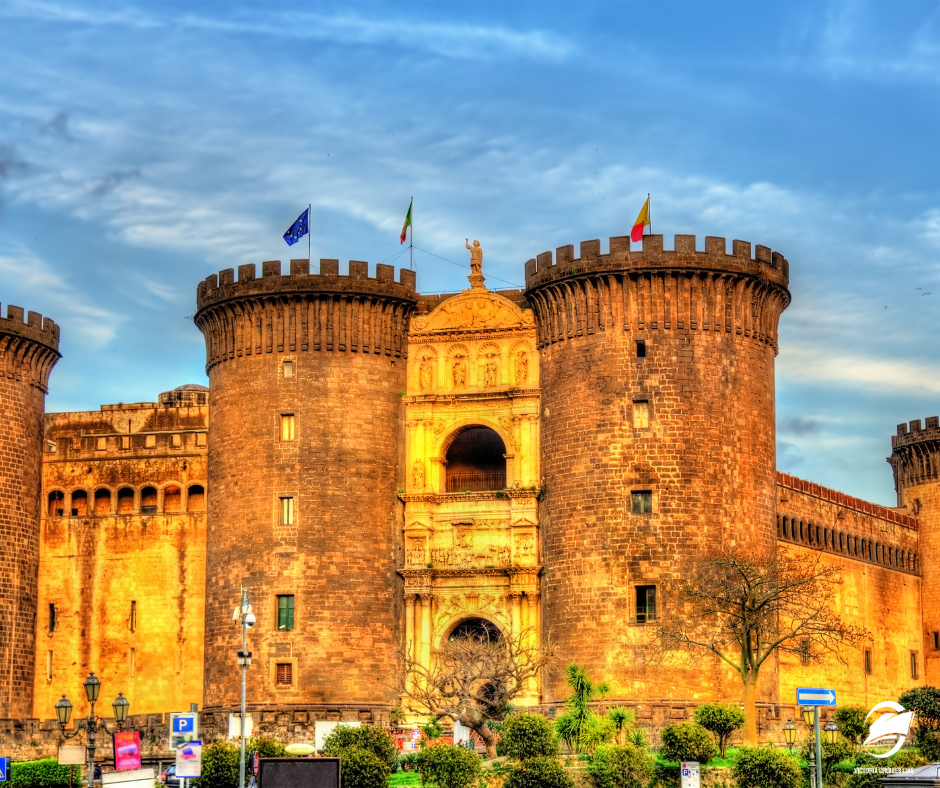
Naples Cathedral (Duomo di Napoli): Dedicated to the city’s patron saint, San Gennaro, this Gothic cathedral hosts an annual festival celebrating the miraculous renewal of his blood relic.


Castel Sant’Elmo: This star-shaped fortress dates back to 1275. Serving military and administrative purposes throughout history, it now functions as a museum. From its ramparts, visitors can enjoy panoramic views of the Bay of Naples and Vesuvius. Below the castle lies the Certosa di San Martino, a former monastery now housing an art museum famous for its picturesque cloisters.
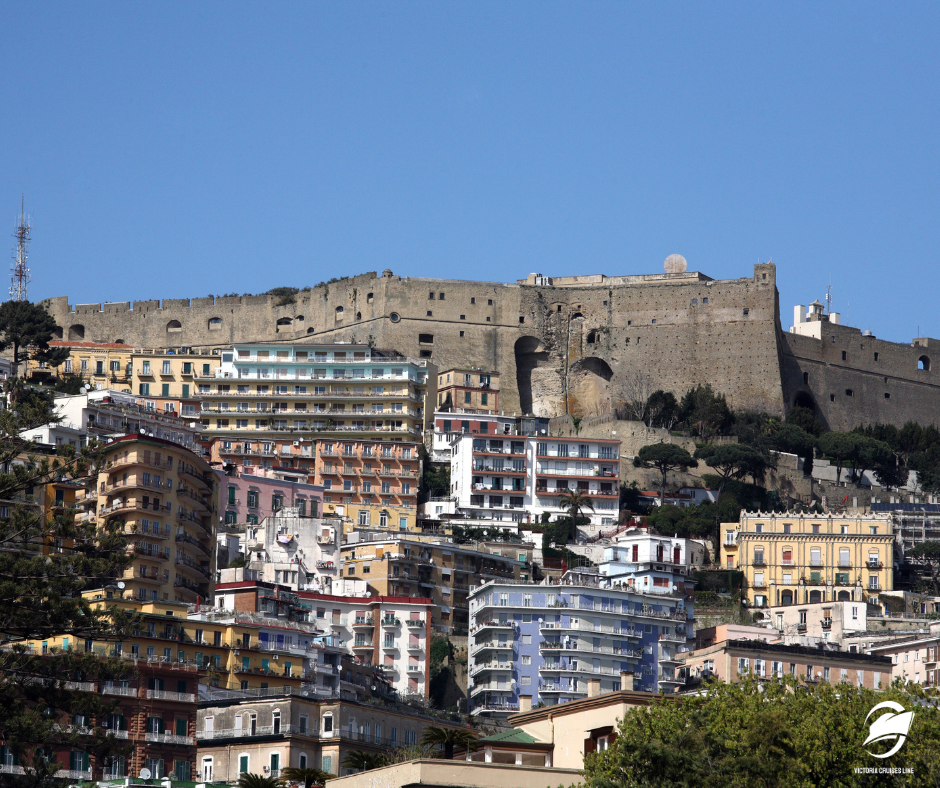
Piazza del Plebiscito: Naples’ largest and most impressive square, bordered by the Royal Palace and the Basilica of San Francesco di Paola, plays a central role in the city’s celebrations and events. Its grand atmosphere reflects Naples’ classic elegance.
Napoli Sotterranea: A mysterious labyrinth running beneath the city, originally constructed by the ancient Greeks for water distribution, later expanded by the Romans. During World War II, the tunnels served as bomb shelters. Tours of this underground world reveal a hidden side of Naples, offering a completely different perspective on the city’s history.
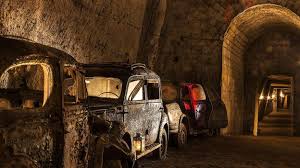

Curiosities and Delights
Naples is a treasure trove for culinary enthusiasts. As the birthplace of pizza, tasting an authentic margherita or marinara pizza is a must. Other local specialties include sfogliatella, a crispy, sweet pastry, and baba al rum, a rum-soaked sponge cake. Naples’ cafes are renowned for their strong espresso and the tradition of caffè sospeso, where patrons pay for an extra coffee to be enjoyed later by a stranger.


Exploring the Surroundings
• Capri: Capri, reachable from Naples by a quick ferry ride, is an island of stunning blue grottos and spectacular rocky shores. Its Mediterranean luxury, breathtaking panoramas, the picturesque Anacapri, and the famous Piazzetta all contribute to the island’s enchanting charm. Capri also offers plenty to explore for history and culture enthusiasts, such as the Villa Jovis, the former palace of Emperor Tiberius. This true paradise is an ideal destination for relaxation and enjoying the beauty of nature.

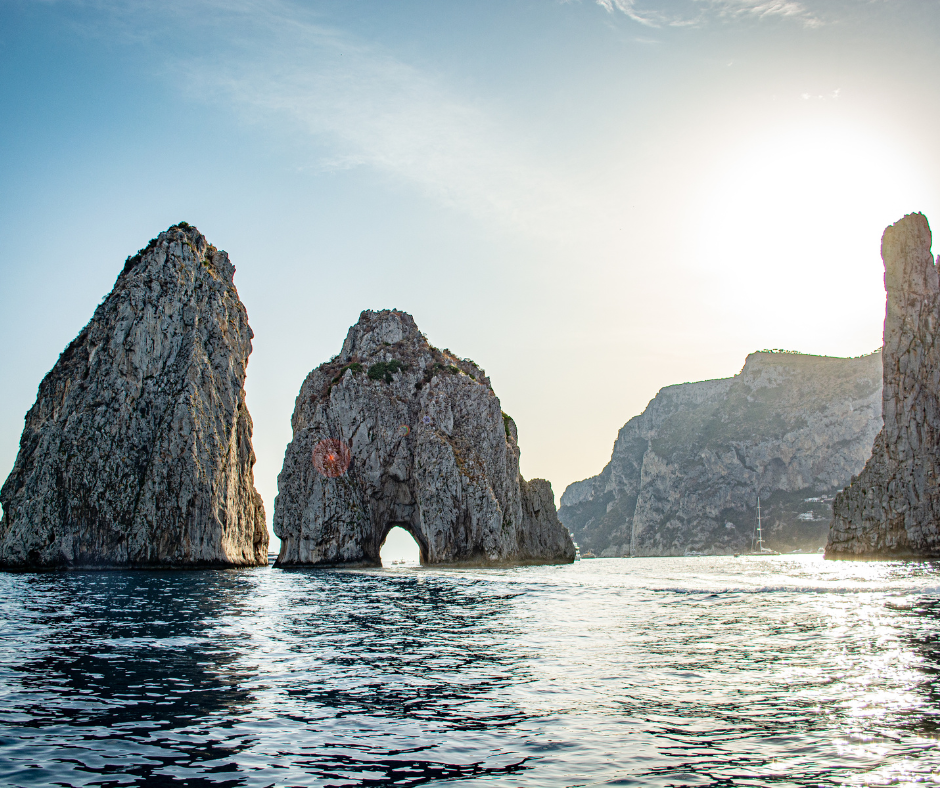



• Sorrento: Nestled between the Amalfi Coast and the Bay of Naples, Sorrento is a picturesque town famous for its stunning coastal views, colorful houses, and serene atmosphere. The town is renowned for its limoncello, made from locally grown lemons, which has become a symbol of Italian life. Strolling through Sorrento’s narrow streets, visitors can explore numerous local artisan shops and restaurants that showcase the flavors and culture of the region. The town also serves as an excellent starting point for exploring nearby iconic destinations such as Pompeii, Herculaneum, and Capri, which is just a short boat ride away.


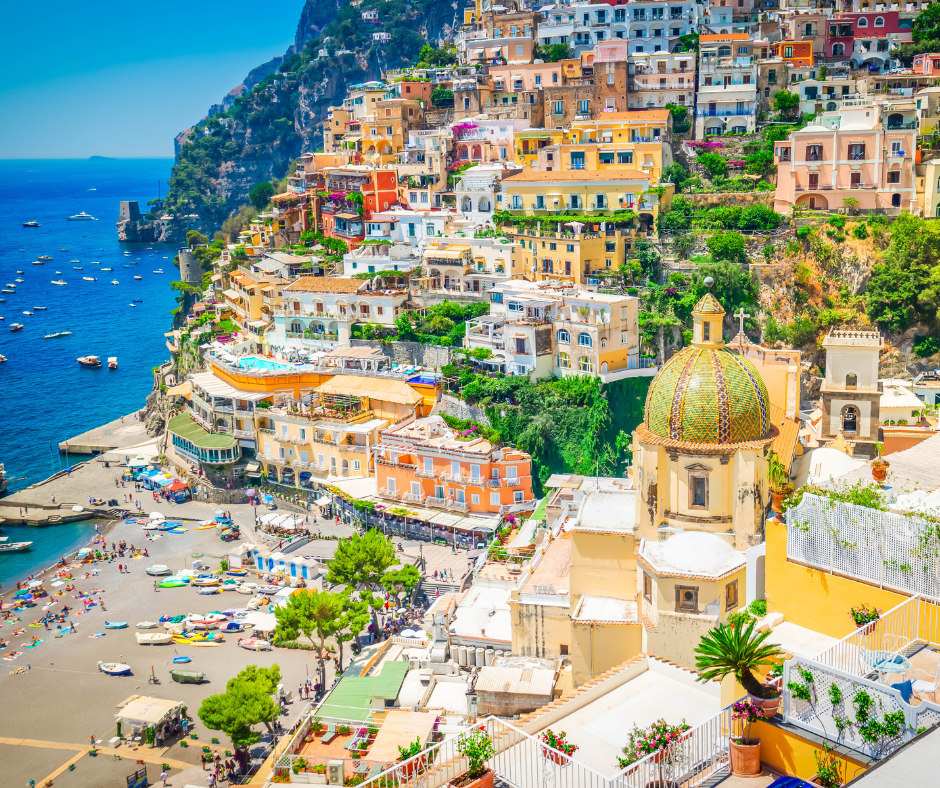
• Amalfi Coast: One of Italy’s most beautiful coastal regions, the Amalfi Coast dazzles visitors with its crystal-clear Mediterranean waters, steep mountains, and picturesque villages. The coastline is famous for its colorful, cliffside towns like Positano, Ravello, and Amalfi, each with its unique character and enchanting atmosphere. Among the region’s best-known landmarks is the Amalfi Cathedral, which reflects the town’s history and religious heritage. In addition to its coastal beauty, the Amalfi Coast attracts visitors with its excellent local cuisine, where lemons and limoncello take center stage. The region is an ideal place for relaxation, hiking, and embracing the traditional Italian lifestyle.



• Ischia: Ischia, the largest island in the Bay of Naples, is known for its scenic landscapes, thermal springs, and Mediterranean charm. The island has been visited for centuries by those seeking healing, as its volcanic thermal waters and spas are renowned for their health benefits. Ischia’s picturesque towns, such as Forio and Ischia Porto, welcome visitors with colorful houses, excellent seafood restaurants, and friendly cafés. One of the island’s iconic landmarks is the Castello Aragonese, situated on a small islet connected by a pedestrian bridge, offering spectacular views of the sea. The crystal-clear waters surrounding Ischia are perfect for swimming and diving, especially near the village of Sant’Angelo, which provides a peaceful, car-free environment. Popular as a holiday destination, Ischia is perfect for relaxation and enjoying natural beauty.


Procida
The smallest island in the Bay of Naples, Procida stands out with its magical ambiance and colorful houses, particularly in the picturesque Marina Corricella harbor. Despite its size, the island boasts a rich cultural heritage and has served as a filming location for famous movies such as The Talented Mr. Ripley and Il Postino. Walking through Procida’s narrow streets and hilly terrain, visitors can discover the authentic tranquility of local life, far from the tourist crowds of the larger islands. The Terra Murata fortified district, the highest point on the island, offers breathtaking views of the sea. Procida is the perfect destination for those seeking a quieter, unspoiled Mediterranean island getaway.

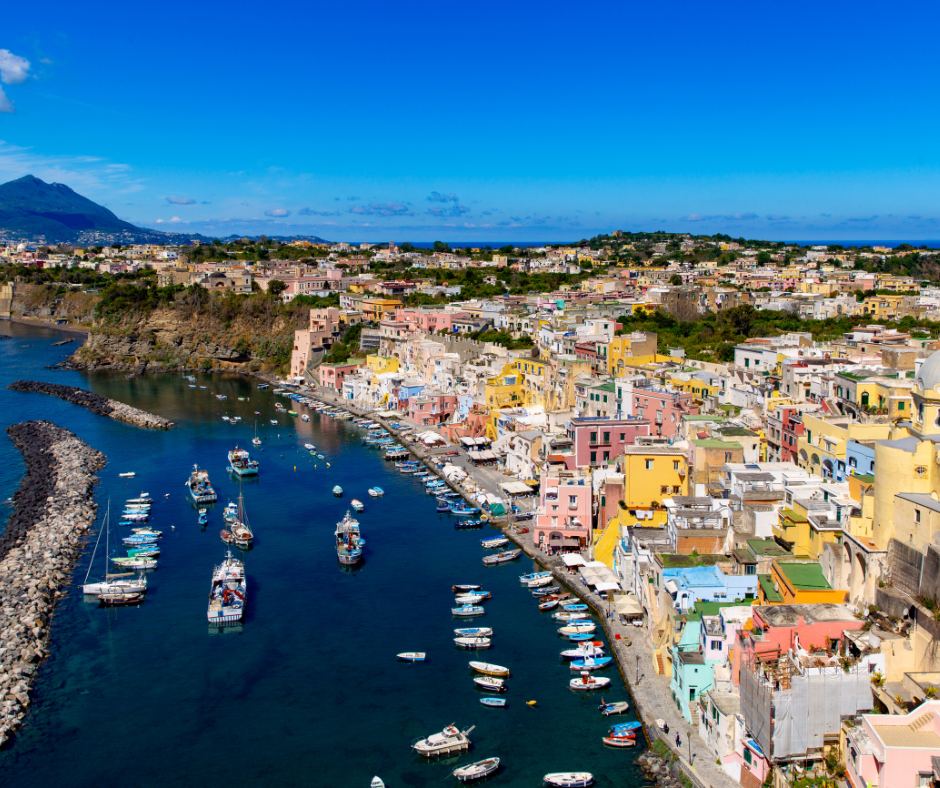
Reggia di Caserta
Just an hour north of Naples lies the Royal Palace of Caserta, built to rival Versailles. This stunning palace of the former Kingdom of Naples is one of the largest Baroque buildings in the world and a UNESCO World Heritage Site. Built in the 18th century, the palace boasts over 1,200 rooms, including lavish throne rooms, opulent staircases, and royal apartments. The palace also features a vast, spectacular park adorned with fountains, artificial waterfalls, and statues, and it is home to the famous English Garden. The Reggia di Caserta is not only an architectural masterpiece but also offers visitors a historical and cultural journey, providing a unique insight into the luxurious life of the Bourbon dynasty.
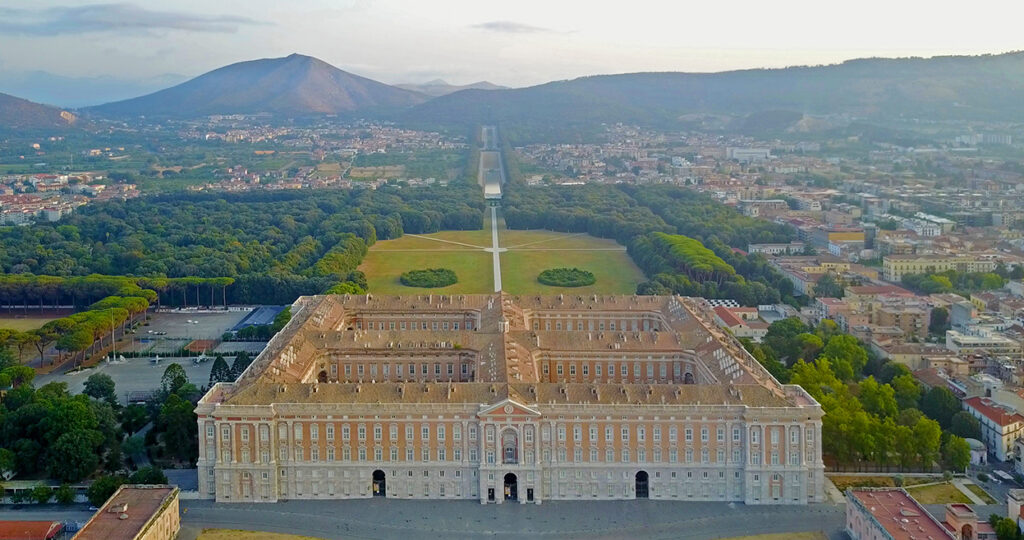



Mandarins and Limoncello Specialties
Naples and its surroundings are famous for their fresh citrus fruits, especially mandarins and lemons. These fresh fruits are locally crafted into limoncello liqueur, often served chilled in a frosty glass as a refreshing post-meal drink. For more about limoncello, visit our blog:

Naples and its surroundings are places where history, culture, and nature converge. Whether it’s the bustling city, the picturesque island of Capri, or the wild landscapes of the Amalfi Coast, southern Italy offers unique experiences for every traveler. A visit to Naples and its surroundings is a true Mediterranean adventure that captivates all the senses and leaves an unforgettable impression.


